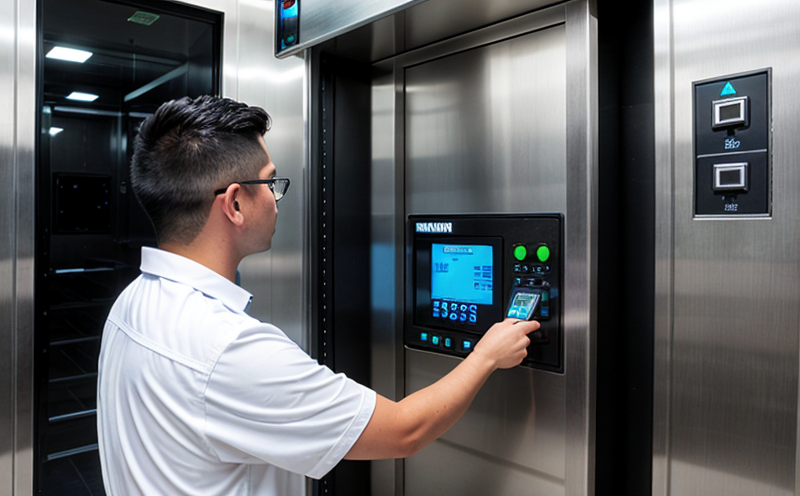Elevator control panel inspection
The elevator control panel is a critical component of an elevator system. It houses vital electrical components that manage the operation of the elevator, including motors, sensors, relays, and associated circuitry. The control panel ensures smooth and safe functioning by receiving signals from various sources like safety switches, door operators, and floor call buttons, and then processing these inputs to direct the movement of the elevator car.
Inspecting the elevator control panel is essential for ensuring that it operates correctly under all conditions. This inspection not only maintains the integrity of the system but also enhances safety by identifying potential issues before they escalate into failures. Proper functioning of the control panel can prevent accidents, reduce downtime, and extend the lifespan of the elevator.
During an inspection, several key components are evaluated:
- Main Power Supply: Ensures that the correct voltage is supplied to the control panel without any fluctuations or surges.
- Circuit Breakers and Fuses: Checks for proper operation and ensures there are no signs of overheating or damage.
- Control Relays: Tests these relays to ensure they can switch between states reliably, which is crucial for the elevator's ability to respond accurately to signals.
- Sensors: Verifies that sensors like proximity and limit switches are functioning correctly, which play a key role in preventing accidents and ensuring smooth operation.
- Control Boards: Examines these boards for signs of wear or damage. Proper functionality is critical as they handle the core logic that manages elevator movement.
- Cables and Wiring: Inspects all cables and wiring to ensure there are no loose connections, corrosion, or other issues that could disrupt operation.
The inspection also includes reviewing the documentation provided by the manufacturer. This documentation often specifies maintenance intervals and recommended practices for ensuring the longevity of the control panel. Compliance with these guidelines ensures optimal performance and safety.
Given the critical role of elevator control panels in public spaces, regular inspections are mandated by local regulations to ensure compliance and safety. These inspections can help prevent accidents that could result from malfunctions or failures within the system.
Scope and Methodology
| Aspect | Description |
|---|---|
| Main Power Supply Check | Verify that the main power supply is stable, with no fluctuations or surges. Ensure it meets the specifications outlined by the manufacturer. |
| Circuit Breakers and Fuses Inspection | Inspect circuit breakers and fuses for signs of overheating, damage, or wear. Ensure they are rated appropriately for the system's requirements. |
| Control Relay Testing | Test relays to ensure they can switch between states reliably without any signs of malfunctioning. This includes checking their contact points and coil integrity. |
| Sensor Calibration and Functionality | Calibrate sensors like proximity and limit switches, ensuring they provide accurate feedback under various operating conditions. Test them in real-world scenarios to ensure reliability. |
| Control Board Evaluation | Evaluate control boards for signs of wear or damage. Perform a functional test to confirm that the logic within these boards operates as intended. |
| Cable and Wiring Inspection | Inspect all cables and wiring for loose connections, corrosion, or any other signs of degradation. Ensure they are securely fastened and meet manufacturer specifications. |
| Documentation Review | Review the provided documentation to ensure compliance with maintenance intervals and recommended practices. This helps in maintaining optimal performance and safety. |
Environmental and Sustainability Contributions
The inspection of elevator control panels plays a crucial role in promoting environmental sustainability by ensuring that elevators operate efficiently, reducing energy consumption, and minimizing waste. By maintaining the integrity of the control panel, we can prevent unnecessary breakdowns and extend the lifespan of the system. This not only reduces the need for frequent replacements but also conserves resources used in manufacturing new equipment.
Furthermore, regular inspections help in identifying potential inefficiencies within the elevator system that could lead to higher energy consumption. By addressing these issues proactively, we can contribute significantly to reducing the environmental footprint of our clients' buildings and facilities. This is particularly important given the increasing emphasis on sustainability and green building practices.
In addition, by ensuring compliance with local regulations and industry standards, we help in maintaining a safer and more efficient public space for all users. This contributes positively to the overall well-being of society, promoting both economic efficiency and environmental responsibility.
Competitive Advantage and Market Impact
The ability to provide comprehensive elevator control panel inspections positions our laboratory as a leader in ensuring safety and reliability within the industry. Our expertise allows us to stay ahead of regulatory changes and emerging trends, providing clients with cutting-edge solutions that enhance their competitive advantage.
By offering high-quality inspection services, we differentiate ourselves from competitors by delivering unparalleled accuracy and precision. This not only ensures compliance but also helps in maintaining a reputation for excellence, which is crucial in building long-term relationships with clients. Our commitment to quality and safety extends beyond just inspections; it encompasses all aspects of our service offerings, ensuring that our clients receive the best possible support.
Our market impact is significant as we contribute to safer public spaces and more efficient buildings, ultimately leading to improved user experiences and reduced operational costs for our clients. By focusing on sustainability and environmental responsibility, we align with global trends and help drive positive change within the industry.





